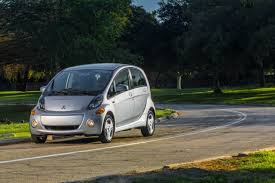Cleaner Electric Cars Are Now Available
- 11/05/2015
- Transport
- Posted by Tessa Romarez
- Leave your thoughts
Most people assume that electric cars are absolutely clean.
They believe that these cars don’t contribute to greenhouse gas emissions because they don’t generate any carbon emissions.
But that is if a person only considers the electric car itself. The overall impact to the environment of electric cars should include the effects of their battery charging cycles. As long as plug-in cars are dependent on their fully recharged batteries to be able to run, they invariably pollute the environment as any gasoline or diesel powered car.
The production of electric car batteries, and the generation of electricity from electric car charging stations are also contributors to the pollution of the environment, even if the electric cars themselves does not emit any carbon dioxide in the air.
That is why more and more electric car manufacturers are developing battery technologies that will enable their cars to increase their distance range and thereby lessen their contribution to the greenhouse gas accumulation in the earth’s atmosphere.
Cleaner electric cars were the subject of the recent study made by the Union of Concerned Scientists. The scientists found that electric cars are now cleaner because of their lower “wells-to-wheels” emissions per mile compared to what they were about a year ago.
The UCS study offered two reasons for this positive development. One of the reasons is the better efficiency of the sales-weighted mix of electric cars that were manufactured from December 2010 to June 2014.
The study attributed this to the enhancement of the distance range of the Nissan Leaf from its initial 73 miles for its 2011 to 2012 models to 84 miles for its 2014 to 2015 models.
With this improved efficiency, it will take an electric car less power to reach one mile than what it could do before.
The second reason is the September UCS updating of its “State of Change” study. This recent update has more up to date information on the state-by-state mix of generating suppliers, as well as the carbon dioxide data related to the production of every kilowatt-hour.
The older edition of the UCS study used the 2009 information on plant emissions and generation sourced from the U.S. eGrid report. All this information is now updated by one year to that of 2010 figures.
The UCS also emphasized that the 2011 to 2012 data indicates a further reduction in coal generation, but this is not included in the eGrid model.
The inevitable result of this new update is the increase in the miles per gallon equivalency for electric cars, in both their efficient use of each kilowatt-hours, and their lower carbon emissions, connected to each of those kilowatt-hours used.
Based on this updated information, a car in California which uses gasoline has to get 95 miles per gallon to be classified as a low-emission car. The figure has increased from 78 miles per gallon from the previous ruling.
In addition, the UCS study also revealed that the “wells-to-wheels” emissions per mile of electric vehicles have fallen in almost all U.S. regions.

